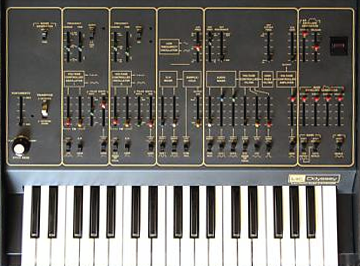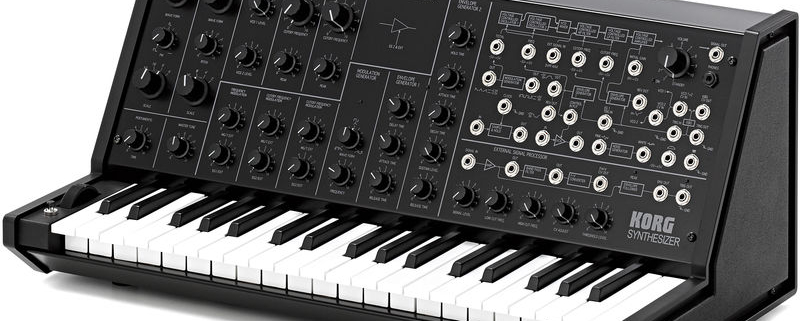Now we’re talking Synth History. I grew up listening to this machine, without even knowing it, as it was used by all those bands that shaped my taste in music. Playing around with this for the first time was an almost religious experience. In my Quest for Simplicity, this one takes the cake so far. What you see is what you get, plain and simple. Nothing is hidden, so just go for it. In that sense, this would have been the perfect first synth, but I don’t mind getting it now. This particular unit is one of the original Odyssey’s with a black face and the 24 dB filters. Or so I was told, I have yet to verify it. I would have to open it up, remove all the slider caps and dissassemble it in order to get a peek at the filter chip, and I just can’t be bothered now. It’s a great machine for weird metallic sounds.
The duophonice feature is quite interesting; when holding a key and pressing another, the other key “borrows” the second oscillator, and you can get quite nice effects that way. Also, getting it to Finland was an adventure in itself. An official Thanks to m@ & Gert who made it possible


